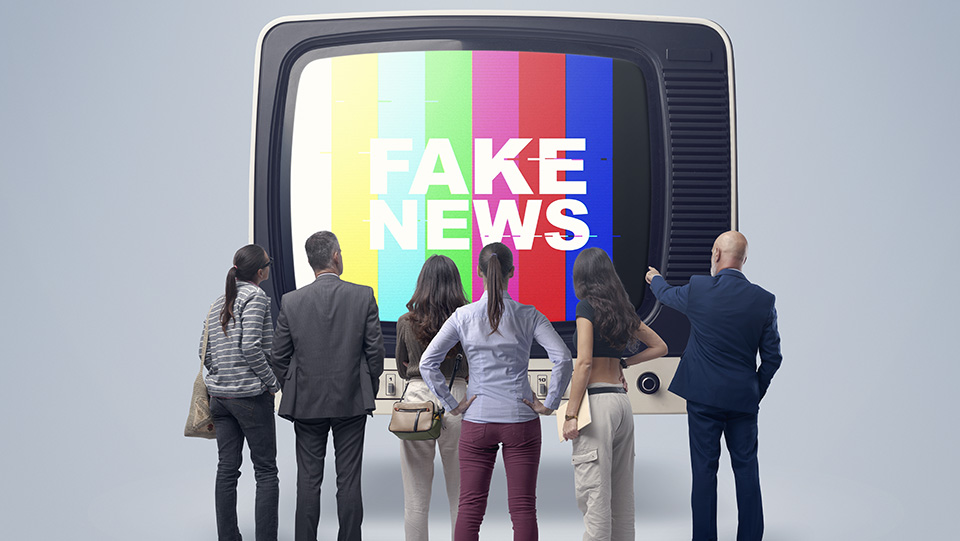The Misinformation Muddle: Untangling Truth, Deception, and the Perils of Censorship
In the swirling vortex of the digital age, where information flows freely and unchecked, the concept of "misinformation" has become a battleground of semantic and ethical debates. While the dangers of deliberate deception are undeniable, the current fervor surrounding misinformation risks conflating honest mistakes with malicious intent, potentially stifling free speech and critical thinking. Dr. Tim Crowley, a lecturer in philosophy at University College Dublin, dissects the nuances of misinformation, disinformation, and the worrying implications of censorship in a recent commentary. Drawing upon pop culture, legal definitions, and international human rights frameworks, Crowley navigates the complex terrain of truth and falsehood in the online sphere.
Crowley begins by highlighting the inherent ambiguity of the term "misinformation," drawing a parallel to the iconic exchange between Rick and Captain Renault in the classic film Casablanca. Rick’s claim of seeking "the waters" in the desert city of Casablanca serves as a humorous illustration of a statement that is technically false, but not necessarily malicious. Crowley uses this example to underscore the importance of distinguishing between unintentional falsehoods and deliberate attempts to mislead. He then delves into the more insidious realm of "disinformation," which involves the intentional dissemination of false information to cause harm. The distinction between these two concepts lies in the intent of the speaker: misinformation is a mistake, while disinformation is a deception.
The UN’s 2021 Special Rapporteur’s Report on Disinformation and Freedom of Expression offers a clear framework for understanding these terms, emphasizing that conflating them can endanger freedom of expression. The report defines disinformation as knowingly false information spread to cause harm, while misinformation is the unintentional spread of false information. This distinction hinges on intent and recognizes that both categories can cause harm. Crowley contrasts this nuanced approach with the Irish Electoral Commission’s interpretation, which defines misinformation broadly as any false or misleading online electoral information that may cause public harm, regardless of intent. This definition subsumes disinformation under the umbrella of misinformation, creating a potential conflict with the UN’s emphasis on protecting free speech.
Crowley expresses concern over the Irish Electoral Commission’s broad powers to correct or remove information deemed "incorrect," powers Justice Marie Baker, a member of the Commission, describes as "very extensive." He questions Baker’s assertion of a "right not to be misinformed," arguing that such a right, if taken literally, could be used to justify censorship of any information deemed false, regardless of intent. This, Crowley argues, directly contradicts the UN’s stance that the right to freedom of expression applies to all information, regardless of its truth or falsity, and that restrictions on this right should be "exceptional and narrowly construed." The potential for this broad interpretation to stifle political debate and satire is a significant concern for Crowley.
The chilling effect of censorship is a central theme in Crowley’s analysis. He argues that an agency empowered to police mis- and disinformation is invariably tempted to suppress political opinions it dislikes, cloaking this censorship under the guise of correcting factual errors. The power to remove online content, he contends, poses a far greater threat to public discourse than a persuasive, yet factually incorrect, online post. Instead of wielding the power to censor, Crowley suggests the Electoral Commission should focus on promoting robust public information regimes, media diversity, and a strong culture of free expression, all of which are bulwarks against disinformation.
Crowley then turns his attention to the public perception of disinformation, citing a Reuters Institute Digital Report from 2020 that identifies governments and political parties as the primary sources of online misinformation. He observes that research suggests exposure to misinformation has a limited impact on beliefs and behavior, primarily influencing those already ideologically entrenched. Furthermore, He points out that in the age of ubiquitous internet access, individuals have the tools readily available to verify information for themselves, emphasizing the recipient’s responsibility in discerning truth from falsehood.
Using the example of the 2024 Halloween hoax in Dublin, where crowds gathered for a non-existent parade based on online rumors, Crowley illustrates how easily misinformation can spread, but also how readily it can be debunked with readily available tools. He criticizes the tendency to blame social media for the spread of misinformation, arguing that the real culprit is human nature, particularly our susceptibility to ideological tribalism and confirmation bias. He reinforces the message of personal responsibility, urging individuals to critically evaluate the information they consume and not blindly accept headlines that align with their pre-existing beliefs.
Crowley concludes with a call for personal accountability in the fight against misinformation. Echoing the wisdom of a former US President (though slightly misquoting), he reminds us that being fooled once is unfortunate, but being fooled twice is our own fault. The solution, he argues, lies not in censorship, but in utilizing the same tools that facilitate the spread of misinformation – the internet and social media – to critically evaluate information and seek out the truth. In a world saturated with information, the ability to discern fact from fiction is not just a valuable skill; it’s a fundamental responsibility.


